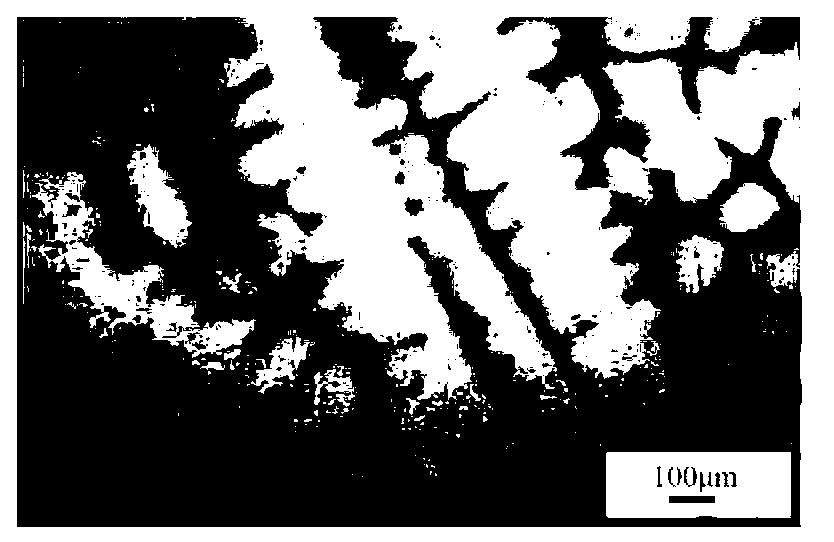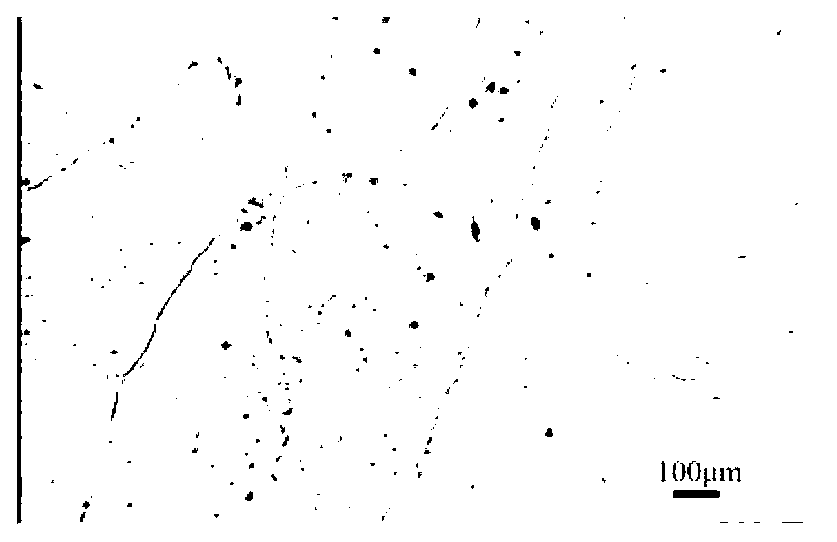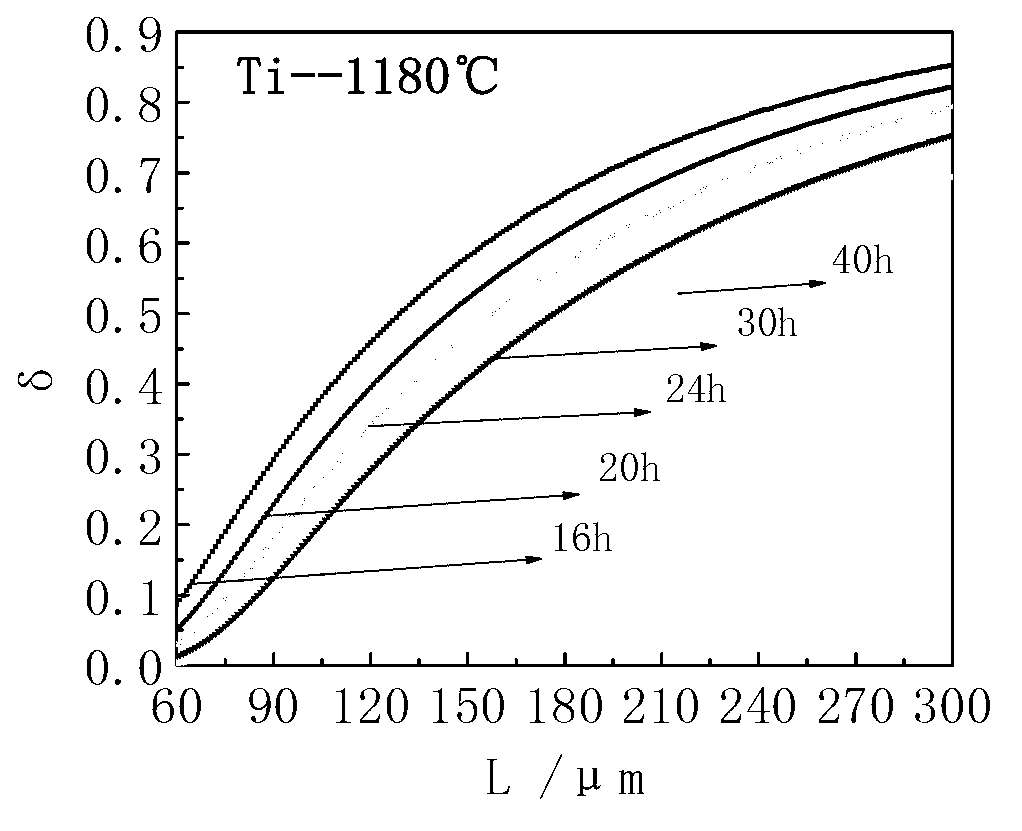GH4738 nickel base superalloy casting ingot homogenization treatment method
A nickel-based superalloy and homogenization treatment technology is applied in the field of thermal processing of nickel-based deformed superalloys. The effect of size
- Summary
- Abstract
- Description
- Claims
- Application Information
AI Technical Summary
Problems solved by technology
Method used
Image
Examples
Embodiment 1
[0027] The preparation of GH4738 nickel-based superalloy includes the following processes, raw material preparation→vacuum induction melting→casting into Φ520mm electrode rod→electrode cutting and surface grinding→electroslag remelting into Φ660mm ingot shape→4kt fast forging to Φ520mm electrode rod→electrode Head cutting, surface grinding→vacuum self-consumption melting Φ610mm self-consumption ingot→consumable ingot homogenization and peeling treatment→4k ton fast forging machine upsetting to Φ620mm→lathe peeling to 600mm cylinder→ultrasonic flaw detection→cutting and flat head→test performance → Storage.
[0028] In order to effectively solve the segregation problem and effectively control the excessive growth of crystal grains, the present invention adopts the following processing methods when manufacturing GH4738 alloy steel ingots:
[0029] A). Raw material preparation
[0030] Raw material ratio (mass percentage) C: 0.02-0.08; Al: 1.2-1.6; Ti: 2.75-3.25; Co: 12.0-15.0; ...
Embodiment 2
[0049] This example proposes a nickel-based superalloy homogenization treatment method, and obtains a better ingot. The difference between the homogenization process and Example 1 is that the preparation of GH4738 nickel-based superalloy includes the following process, raw material preparation→vacuum Induction melting→casting into Φ480mm electrode rod→electrode cutting and surface grinding→electroslag remelting into Φ508mm ingot shape→4kt rapid forging to Φ450mm electrode rod→electrode cutting and surface grinding→vacuum consumable melting Φ508mm consumable ingot→ Homogenization and peeling of consumable ingots → upsetting and drawing of 4kt fast forging machine to Φ480mm → lathe peeling to 450mm cylinder → ultrasonic flaw detection → cutting and flattening → testing performance → storage. After testing, in this example, by adopting the homogenization treatment method of the present invention, an alloy steel ingot with uniform composition and structure can be obtained, and at t...
PUM
 Login to View More
Login to View More Abstract
Description
Claims
Application Information
 Login to View More
Login to View More - R&D
- Intellectual Property
- Life Sciences
- Materials
- Tech Scout
- Unparalleled Data Quality
- Higher Quality Content
- 60% Fewer Hallucinations
Browse by: Latest US Patents, China's latest patents, Technical Efficacy Thesaurus, Application Domain, Technology Topic, Popular Technical Reports.
© 2025 PatSnap. All rights reserved.Legal|Privacy policy|Modern Slavery Act Transparency Statement|Sitemap|About US| Contact US: help@patsnap.com



